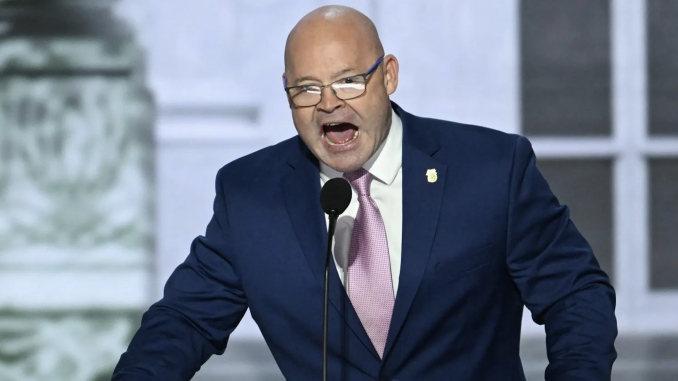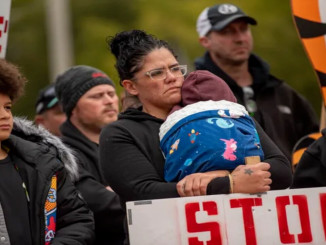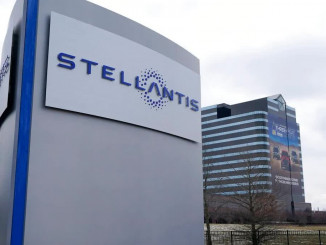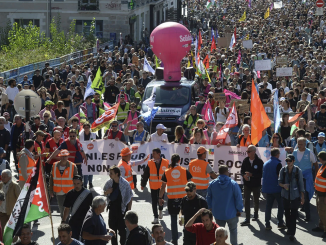
In most presidential election years, the heads of big labor unions usually endorse who the Democrats pick as their candidate, so when Teamster Union President Sean O’Brien announced he had accepted Trump’s invitation to address the GOP convention, it was a shock to many labor union officials and activists. The GOP shows its hostility to unions by pushing right to work laws, to name just one example, and many commentators pointed this out. Most union officials condemn Trump’s vicious scapegoating of people of color, especially immigrants, which is the key to his political success at a time when all working people are faced with a decline in their standard of living. The Teamsters may not formally endorse Trump or Biden and it is unlikely that O’Brien’s appearance at the GOP convention changed many votes. But many workers were disgusted when he complemented Trump, even if he complained that the GOP should drop “its active opposition to unions.”
At least one Teamster official, John Palmer, an elected member of the IBT’s executive board, termed O’Brien’s appearance at the GOP convention a “disgrace”, saying it “only normalizes and makes palatable the most antiunion party and president I’ve seen in my lifetime.” Palmer continued: Trump “foments blame and hatred against Blacks, Latinos, Asians, Muslims, Americans and immigrants, accusing them of being responsible for many problems both real and imagined”.
O’Brien knows all this and he also knows that a good portion of Teamster members are responsive to Trump’s demagogy. And he knows that, even if he doesn’t much care, the people Trump scapegoats are 31% of his union. But O’Brien didn’t go to the GOP convention to confront Trump. He praised Trump as a “tough S.O.B”; and pleaded with him to make the GOP part of a “bi-partisan coalition to accomplish something real for the American worker.” Fat Chance.
Both parties are owned by the biggest banks and corporations and serve them well. The GOP is fully committed to intensifying attacks on the legal power of unions. Influential GOP politicians are proposing a range of measures including the legalization of what would be “company unions”, unions manipulated and dictated to by companies. For their part, Democratic Party senators defend the filibuster rule which means that pro-union labor legislation needs 60 votes instead of a simple majority to pass. The two-party system is nothing but a “bi-partisan coalition” to defend the capitalist system.
Not surprisingly, union officials’ efforts to encourage “bi-partisan coalitions” in the interests of U.S. workers have a long history of failure. Samual Gompers, the founder of the American Federation of Labor, urged unions 140 years ago to be non-partisan and limit themselves to a policy of “rewarding our friends and punishing our enemies” in both parties.
One Teamster official explained O’Brien’s speech to the GOP as an adaptation to the weakness of unions today. Dustin Guastella, operations director of the 6,500 member Teamsters Local 623, wrote, “Labor is today weaker than it has ever been since its inception. Despite much-celebrated new organizing drives, the contemporary story of the union movement is one of decline. Actual union density is at historic lows. Meanwhile, corporate interests, barely coordinated in Gompers’s day, now have such influence today that they not only advocate but actually write the legislation for both parties. Labor has nothing comparable to this level of political strength. Gompersism might be appealing today, not because it promises great returns, but precisely because there is little room to do anything else.”
U.S. union leaders have almost always advocated working in the two party system. They have consistently opposed efforts to persuade unions to set up a union based political party to oppose the two parties of big business. Sara Nelson, head of one of the Flight Attendents’ unions, and someone who is often viewed as pushing unions to be more militant, sticks with the two-party system. When asked if unions should start a “labor party,” she answered “no,” Adding that “when we (the unions) are strong both parties will have to come to us.” She seems to forget that in the late 1940s, when unions represented more workers (35%) than they ever have before or since, how the Democrats and the GOP formed a “bi-partisan coalition” to pass the most severe anti-labor law ever, the Taft-Hartley act of 1947 which included “right to work laws” and limitations on the right to strike.
It is certainly true that capitalist power over our society is as great, maybe greater than it has ever been in the history of the United States. For decades U.S. unions have bolstered company profits by negotiating concessionary contracts at the expense of their members wages and benefits.
The unions’ policy of trying to maneuver within the two-party system controlled by the bosses is as much a burden on the working class as signing concessionary contracts. The US workforce, especially young workers, is more and more discontented. Union workers have begun to demand restoration of the cuts in wages and benefits made in the decades of concessions. When workers recover the power to fight the boss on the job, so too will grow the idea of organizing to break out of the two-party system. It can’t come soon enough.




